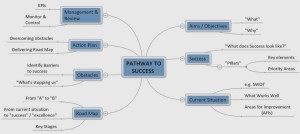The Beginner’s Guide to Virtual and Augmented Realities
Virtual reality and augmented reality, they seem to be hot buzzwords which have all heard before.
But what do they really mean and what sets them apart from each other?
In this post we’ll take a closer look.
What is Virtual Reality (VR)?
In simple terms, VR is an artificially created world with the help of visual and virtual elements. For instance, you wear a headset, and it instantly immerses you into another world that is meant to trick your senses into thinking that it’s real. Your brain literally thinks you are in a completely different place.
So where did VR come from?
Virtual Reality Origins
Virtual Reality can first be dated back to 1962, when Morton Heilig, a Filmmaker, made the Sensorama, which was styled like an arcade with a vibrating seat, 3d display, sense producer, fan and stereo sound.
One of the experiences was riding a motorcycle down the streets of Brooklyn. A viewer would have a 3D view of the streets while having the wind blow in their face while simultaneously feeling the vibration of the motorcycle seat and even experiencing the smells of the city.
While it was a pioneer technology then, it didn’t really attract enough buzz. Most people would later attribute the genius of VR displays to Ivan Sutherland, who is a computer scientist from MIT.
Ivan Sutherland created the first VR headset in 1968, called the Sword of Damocles. He and his team were the first to conduct a virtual headset experiment. Just to add, Sutherland was quite an ingenious man as he also created the first Sketchpad – an advanced computer design software – in 1963.
It wouldn’t be until 1987 when the actual term Virtual Reality was coined. The term was the brainchild of Jaron Lanier, an American computer philosopher and computer scientist.
Let’s break down the actual meaning of virtual reality. Virtual means “being something in effect though not an actuality or in fact” (this is from middle 15th century English). So in other words ideally VR is an approximation of our reality that is digital but not reality itself.
Since its inception in the late 60s, VR Hardware has primarily existed in labs and University research centers in huge forms that never made it to the markets for commercial use but mainly used as a device to understand the sensory limits of our brains. It was also used to treat cognitive behavior and PTSD in therapy patients.
Companies such as NEC and Nintendo have indeed attempted to bring VR to the mainstream but have both failed to break into commercial markets on numerous occasions. Broadly speaking the technology just wasn’t there and the threshold for building an convincing headset was too high until now.
Today, VR is now widely used amongst 3D artists, gamers, real estate agents, astronauts, teachers, architects and students. After showing bright signs, VR has finally come to shine.
What is Augmented Reality (AR)?
Augmented reality, also called mixed reality, is the result of using technology to superimpose information — sounds, images and text — on the world we see, thus providing a composite view.
It’s a different beast from VR. Augmented reality’s main purpose is to be an enhancement of the real world around us by adding some magic virtual objects to it, rather than transport you to another world like VR does.
If you have ever played Pokémon go or have used snapchat lens face filters, you’ve already used original forms of augmented reality.
The term augmented reality is attributed to a former Boeing researcher Thomas Caudell in 1990. Augment is from the Latin word Augere, which means to increase or to add. Hence AR technology is adding to our existing reality.
Currently augmented reality is also showing promise with efforts like Microsoft’s HoloLens, a very secretive magically project.
To enable you understand AR in detail, the Make a Video Hub team has put together an informative and entertaining infographic about the current status of AR.
A Quick Recap of These Technologies
Virtual Reality aims to completely immerse you in a whole new world with no interference from actual reality. VR literally takes you to another world.
Conversely, augmented reality is supposed to enhance your present world or reality. For instance, objects that are actually on a table, may contain floating information, graphs, and charts and so on which are effortlessly motion tracked to the users view.
What makes AR and VR AR and VR different from any types of technology is that it directly affects the processes and perceptions of the human brain in a quite obvious way. It’s the only technology that can provide actual packaged experiences.
Although many people still doubt if VR and AR are just another fad which will fade out soon like those previous hype cycles of technology in 1980s and 1990s, one thing we have to admit here is that the technology behind is much more powerful at this time, it’s a lot more feasible as well.
Think of it as a time that’s parallel to smartphones just before the iPhone. We just need the right blend of killer AR and VR applications, product, price and consumer demand to really begin the altered reality spark.
If developing at current rates, AR and VR will hit the masses in a few years to come. If done right these technologies show incredible potential.

Featured Contributor Paul Kalman

Paul Kalman, the owner and editor of makeavideohub.com, an educational website sharing step-by-step and easy-to-follow instructions for first-time editors to make their very first YouTube video and promote it to get most views.
(41)








